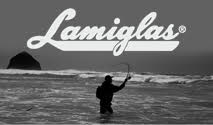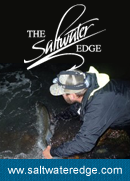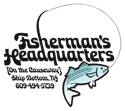Written for the Surfcaster’s Journal Blog readers by a special Guest
Charles A. Witek, III, Chairman
Coastal Conservation Association Atlantic States Committee
STRIPED BASS WIN BIG AT ASMFC
Last February, the Atlantic States Marine Fisheries Committee began to consider the possibility of increasing the commercial striped bass quota, a measure that was being advanced primarily by Pat Augustine, the Governor’s Appointee from New York and Michael Johnson, who holds a proxy from the Legislative Appointee from North Carolina.
Despite strong opposition, a draft Addendum to the Interstate Management Plan for Atlantic Striped Bass, which proposed a commercial increase, was approved at ASMFC’s May meeting, and public hearings were held over the summer. Over 2,000 comments opposing the increase were received, as opposed to just 60 comments in favor (the official ASMFC estimate was that 97% of all comments received were in opposition to the increase). However, when dealing with ASMFC, there is always a concern that the personal opinions (and, in some cases, the personal financial and/or business interests) of the governors’ and legislative appointees could override the desires of their constituencies. Thus, there was a real chance that the commercial increase would go through.
After all, the May vote to move ahead with the Addendum was a fairly lopsided 10 to 6. If folks wanted to prevent a bigger commercial bass kill, they had a lot of work to do.
As Chairman of the Coastal Conservation Association’s Atlantic States Committee, which coordinates fisheries advocacy for all of the CCA member states between Maine and Florida, I helped spearhead the advocacy efforts for one of the organizations which set out to defeat the commercial increase.
The first step was to marshal our arguments. On paper, the commercial increase didn’t look too significant, and we were concerned that managers wouldn’t appreciate its potential impact. That is because all of the estimates of the effects of increased commercial harvest were based on today’s bass population (or, more precisely, the population for the years 2004-2008, when it was at its peak). What was left out of the equation was the impact on a population that is expected to decline through at least 2015—and, given poor recruitment in Maryland, perhaps well beyond that date. That potential threat to the future of the stock is what had to be brought to the fore.
The next step was getting the members involved. Those reading this who have ever been a part of a real grassroots organization know what it is like when volunteers communicate with other volunteers, so that in each state the membership opens like a blossoming flower to turn out at meetings and, if they can’t attend, to put their comments on the public record. With the help of Dick Brame, CCA’s Atlantic States Coordinator (a paid staff member with a graduate degree in wildlife management), we made sure that each volunteer presented a consistent message—that the bass population appeared to be in decline, and that this was not a time to increase anyone’s quota. That this was a time for caution.
Still, the outcome was in doubt, and after ASMFC’s comment period was over, attention turned to each state’s commissioners, with volunteers again being asked to make their preference known. Some feedback started coming back to the CCA volunteers in a few states that made us believe that commissioners’ minds were changing. Still, as the time drew clear for this morning’s vote, we were still concerned that the commercial increase would go through. Some states, we knew, were firmly opposed, while others were firmly in support. But there were a handful of swing states that could vote either way, and at ASMFC, commissioners have a way of doing unexpected things that introduce wild cards into what at first appears to be a cut-and-dried situation.
So I sat by the phone and waited to hear from Dick, who was in South Carolina attending the meeting. 11:00, the time that the meeting was scheduled to end, had passed, and there was still no news. That could not be good. Then, around 11:15, I got a message. Terry Stockwell of Maine had made a motion to defeat the commercial increase, which was seconded by Ritchie White of New Hampshire. However, Pat Augustine immediately made a substitute motion to increase commercial quota by 30%. His motion was seconded by William McElroy of Rhode Island. In many ways, this was the key vote of the meeting. If the motion passed, the commercial sector would obviously have triumphed, while if it failed, no commercial increase would likely be approved.
When the votes were finally tallied, they totaled 6 in favor, 9 opposed. So far, no commercial increase would take place.
Then came one of those wild cards that we were worried about. Roy Miller of Delaware attempted to keep the door to a bigger commercial kill open by proposing a compromise, consisting of a small, 10% increase of limited duration, which would “sunset” after either the interim stock assessment next year or the more comprehensive “baseline” assessment in 2013. We were afraid that this one might appeal to commissioners who wanted to appear “reasonable” with an alternative to a straight yes-or-no vote. I held my breath awaiting the outcome.
However, the next message that I got from Dick contained nothing but good news. The 10% increase had failed by the same 6-9 margin, and a vote on the main motion—no increase—was finally held. And that vote represented an unqualified win for conservation-minded anglers. By a margin of 10-4, with one abstention, the decision not to increase the commercial quota was made. The striped bass, and all of us who care about its future, had won.
Maine, New Hampshire, Massachusetts, Connecticut, New Jersey, Pennsylvania, Maryland, Virginia, the National Marine Fisheries Service and the US Fish & Wildlife Service all voted against the commercial increase. Rhode Island, New York, Delaware and North Carolina supported the increase, and opposed the motion for status quo. The Potomac River Fisheries Commission abstained, and the District of Columbia was absent.
As the meeting ended, Pat Augustine railed against the result, saying that fisheries management was not a democracy, and so implying that public comment should not have affected the outcome. He compared the 2,000 people who opposed the increase to Obama voters in 2008, and it was not a favorable comparison. But the public had clearly told the commissioners how the public striped bass resource should be managed, and most of their representatives had listened.
And every person and organization who took the trouble to contact ASMFC and their state commissioners over this issue should be proud of the result. ###
Charles A. Witek, III, Chairman
Coastal Conservation Association Atlantic States Committee












Thumbs up.
↓That’s very good news. Am I mistaken, or has the commercial catch been less than the quota in the years past??
ab
↓A think a big thank you is due to the ones who opposed. This is great news.
↓Yay! Super happy for the stripers woo hoo!
↓I think I’ll throw my local canal a chum party haha…
Aram–
The legal commercial harvest has fallen short of the quota in recent years, although individual states have gone over. The total commercial harvest, including both the legal and illegal components, obviously remains an unknown.
↓We here in New York have a lot of work to do. it is obvious that we need to become a louder voice in Albany then what we are. Commercial fisherman have had a bigger piece of our Representatives ears. We need to get the Striped Bass Game fish status.
↓Great news. Thank you Charles for the hard work you do for the rest of us and thanks Zeno for making everyone aware of issues that alot of us are not on top of. I have to admit I don’t pay enough attention to all of the issues that would effect me ( us ) greatly. Thanks again to both of you.
↓Man… Pat Augustine sounds like a @&$:!
↓It figures NY let us down, this is great news for the striped bass. Its not over though, this James Gilmore needs to go, he ignored thousands of e-mails from concerned fisherman(all other fishing sites I am a part of all urged members to send e-mails, so I’m assuming thousands). Lets try to get him removed. He’s in someones pocket!
↓Sorry charles I did’nt acknoledge you , thank you for what you do…..
↓I like how it is stated that the FISH is the real winner here!
↓Rad!
↓Great news! Nice to know there’s some effort toward conservation!
I’m curious on the tonnage harvested by commercial boats and charter/for-hire boats compared to recreational fisherman… particularly in those states that supported the increased harvest?
What is Pat Augustine’s problem???
↓How about James Gilmore???
What is this guys story?
Outstanding!!!!
Did somebody call a wambulance for Pat Augusttine? LOL.
Great job Zeno on bringing this in front of our community.
↓“As the meeting ended, Pat Augustine railed against the result, saying that fisheries management was not a democracy, and so implying that public comment should not have affected the outcome”
Public comment shouldn’t affect the outcome??? Who does this guy think he is? His personal opinion outweighs that of the public? I thought officials were supposed to represent the public.
↓Rhod eIsland voted for the increase?…. Idiots….
↓How do we try and get Pat Augustine replaced?
↓thank God
↓As a Rhode Islander, I’m disappointed in our state’s vote. At the meeting held in RI only one person among the many who spoke against the proposal was in favor, and he was a fish trap operator. For that matter I’m not sure how many states even allow this type of fishtrapping, which in essence consists of a huge funnel that corrals fish into a holding area. RI has several of them, some of which are attached to rocks along the shore and stretch out several hundred yards. Others are attached to jetties. Invariably, all are situated to capitalize on the travel patterns of fish. With that said, I’m told the upside of fish trapping is that unharvested fish can be released.
↓It takes some real satchel on Mr. Augustine’s part to say that management of a fishery is not a democracy and public opinion should not sway a vote. Thank you CCA for fighting the good fight!
↓I read the good news in this mornings paper. Thanks CCA, Thanks to the Coalition and all who wrote letters.
↓THANK YOU CHARLES & SURFCASTERS JOURNAL..
↓A good win in a long battle. Thanks to Mr. Witek and the CCA for the work they put in to this – and everyone else concerned about the fishery.
Would love to see a decrease in the rec limits up and down the coast some day as well (before it’s too late). Two fish/day is ridiculous.
RI, NY, NC and DE – something needs to be done there.
↓This is very good news!
↓A Very Strong Thank You to all Who sent E Mails, Letters or who called It is obvious that several of the people on that board are on the take. And spouting the party line for someone. NOT the Sport fishing Public
Thank You Charles and Zeno!
↓Absolutely fantastic
↓Thanks Charles and all those who helped stop this absurd increase in the commercial quota. The real problem here is special interests who are obviously giving Pat Augustine and his friends something on the side. It would be great to have a photo contest for best picture of an official recieving money or a vacation paid for by these special interests. 🙂
↓